memo30-01-03
Seasonal Events
January
JINJITSU
If you want to see the image at full size,
save it and see it.
(Confirmed with google chrome)
![]()
national holiday - Jan. 7
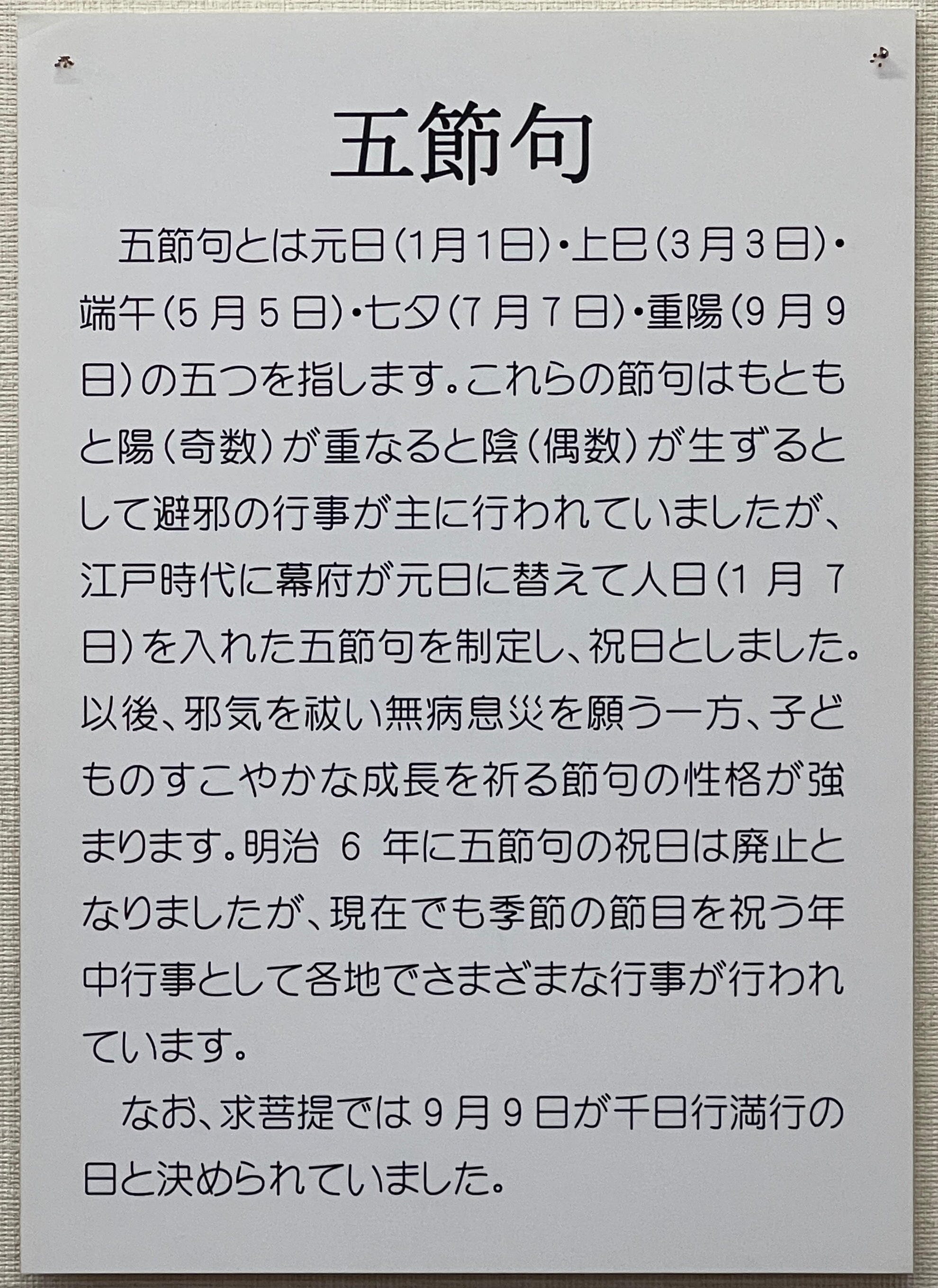
"Sekku" is a traditional event in which offerings are made to spirits at seasonal and agricultural milestones to pray for good health and to purge evil spirits.
It was originally a Shinto ritual from ancient times, but Buddhist events and ideas that were introduced to Japan along the way have influenced it, and it has been transmitted to the present day as a mixed culture.
"Sekku" is sometimes collectively referred to as "Go(5)Sekku".
"Go(5)Sekku" is celebrated five days a year: "Jinjitsu" on January 7, "Jhoshi" on March 3, "Tango" on May 5, "Shichiseki" on July 7, and "Choyo" on September 9.
The originally existing "Go(5)Sekku" was re-designated as a national holiday by the central government during the Edo period, and was abolished in 1873.
However, even after "Go(5)Sekku" was discontinued, it became a common event and has remained so to this day.
In this page, we introduce "Jinjitsu no Sekku".
"Jinjitsu no Sekku" is also called "Nanakusa no Sekku".

"Jinjitsu no Sekku" comes from fortune-telling as practiced in ancient China.
In ancient China, fortune-telling was done by assigning an animal to each day from January 1 to January 6.
And January 7th is the day to divine humans. This day was called "Jinjitsu".
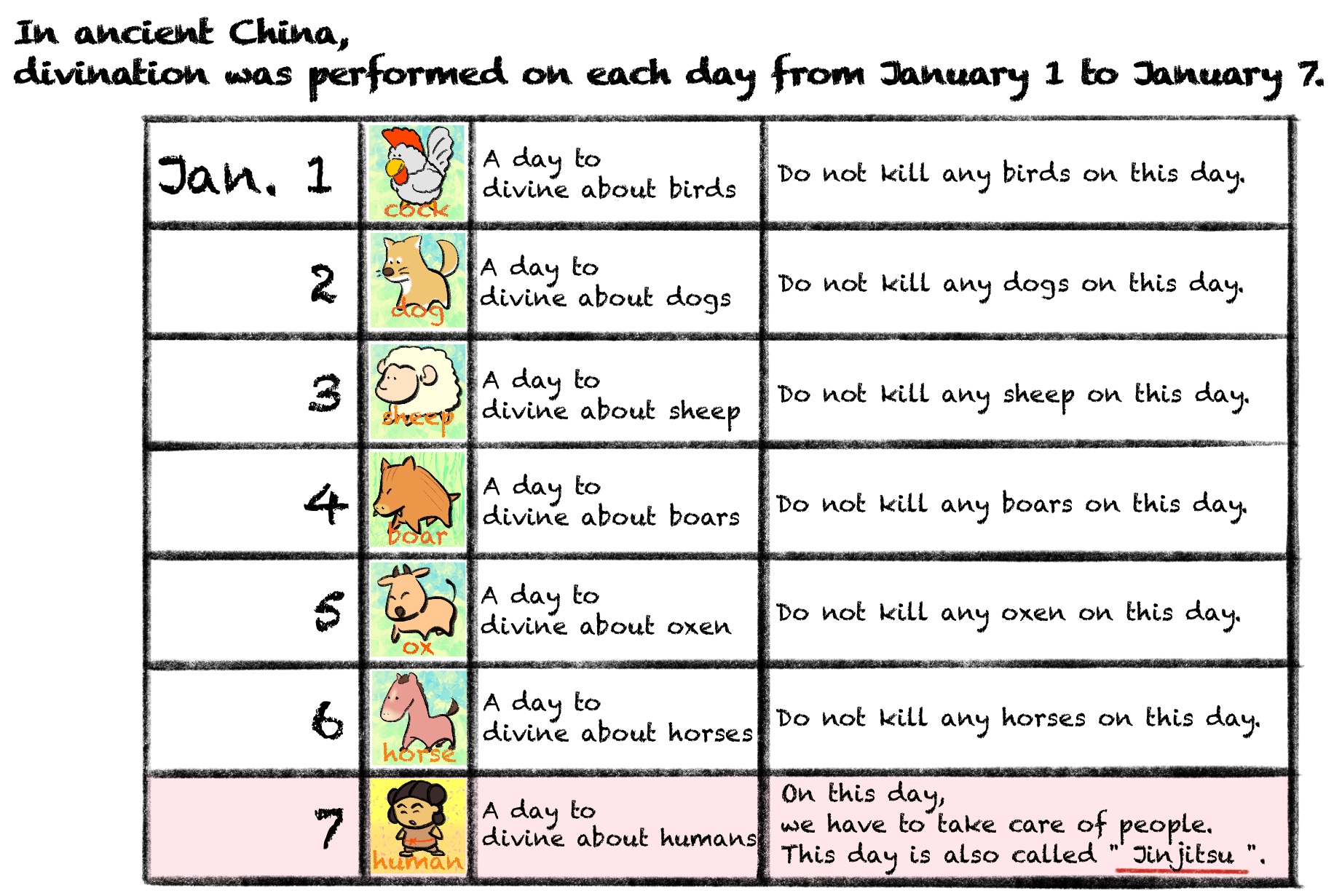
In ancient China, there was a custom of eating a soup with seven kinds of vegetables to wish for good health, as January 7th, "Jinjitsu", was a day to cherish human beings.
In Japan, there was a custom of picking and eating young wild plants after the New Year.
These two customs are said to have merged to form the Japanese custom of eating "Nanakusa-kayu", a porridge made from young wild plants, on January 7.
Later, the central government of the Edo period (1603-1868) made it an official event to eat "Nanakusa-kayu" (rice gruel).
This has spread to the general public and continues today as "Jinjitsu no Sekku".

The following materials are from the GurinGurin facility.
"GurinGurin" is a hands-on facility located in Fukuoka City, Fukuoka Prefecture.
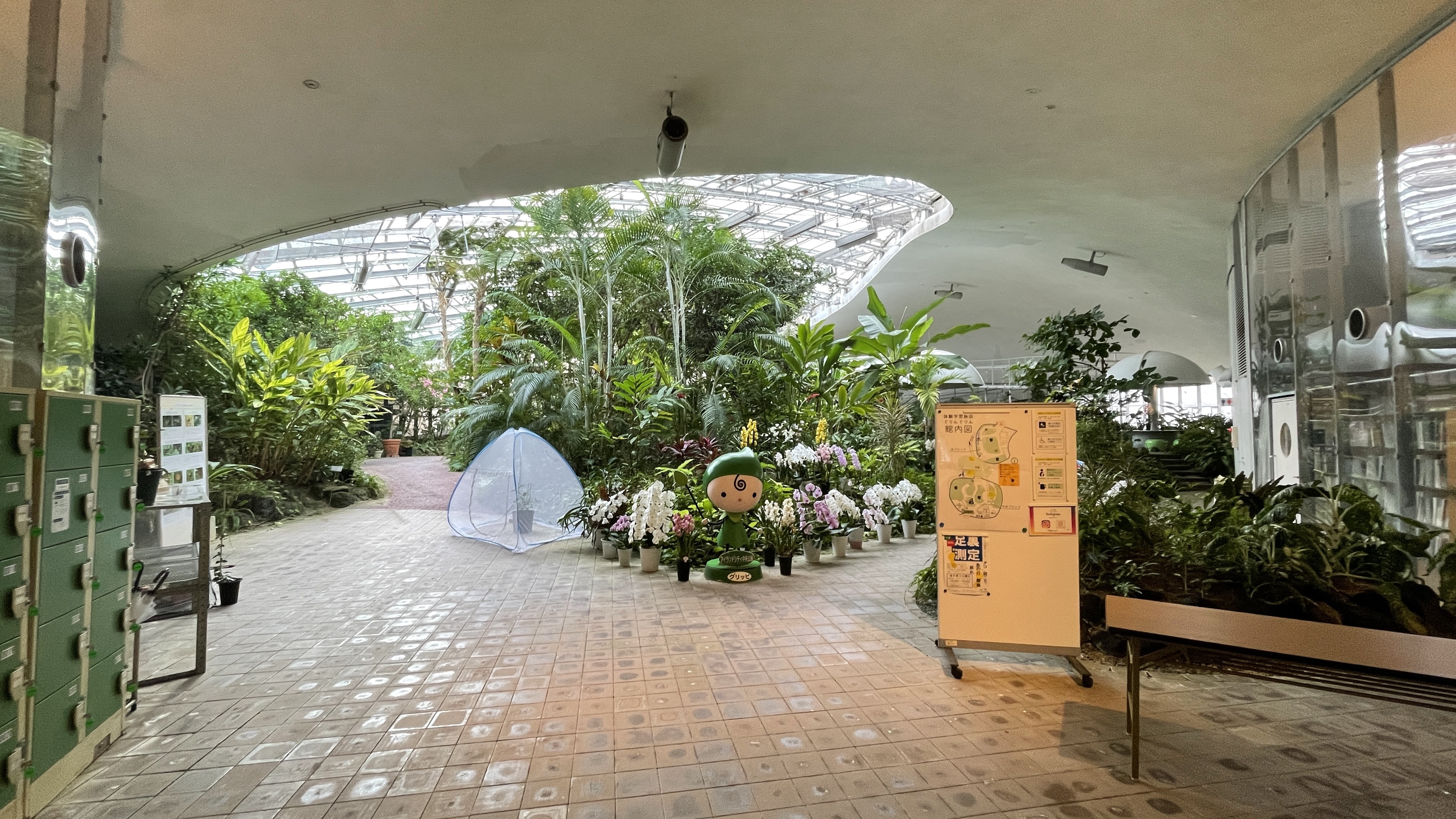
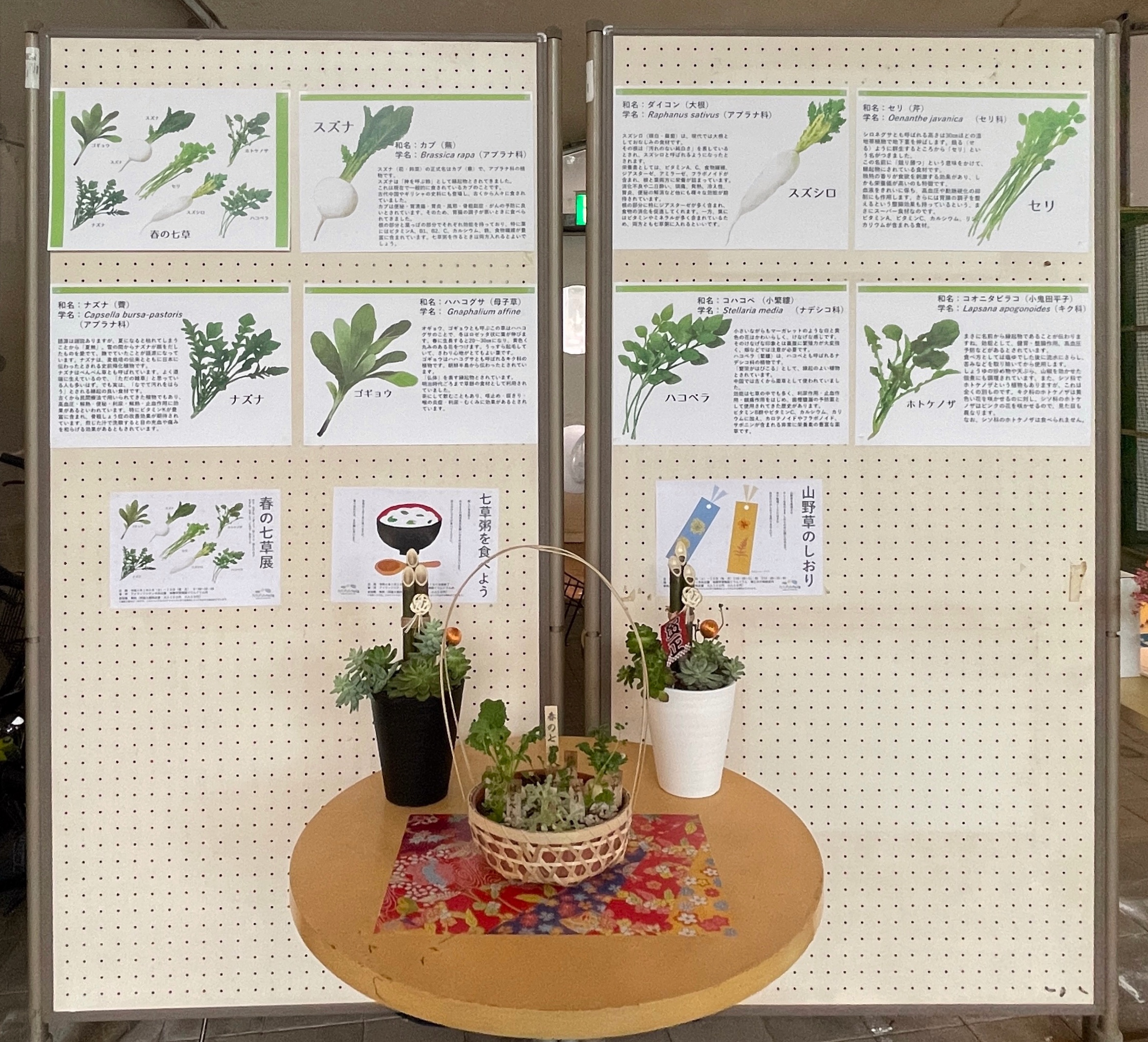

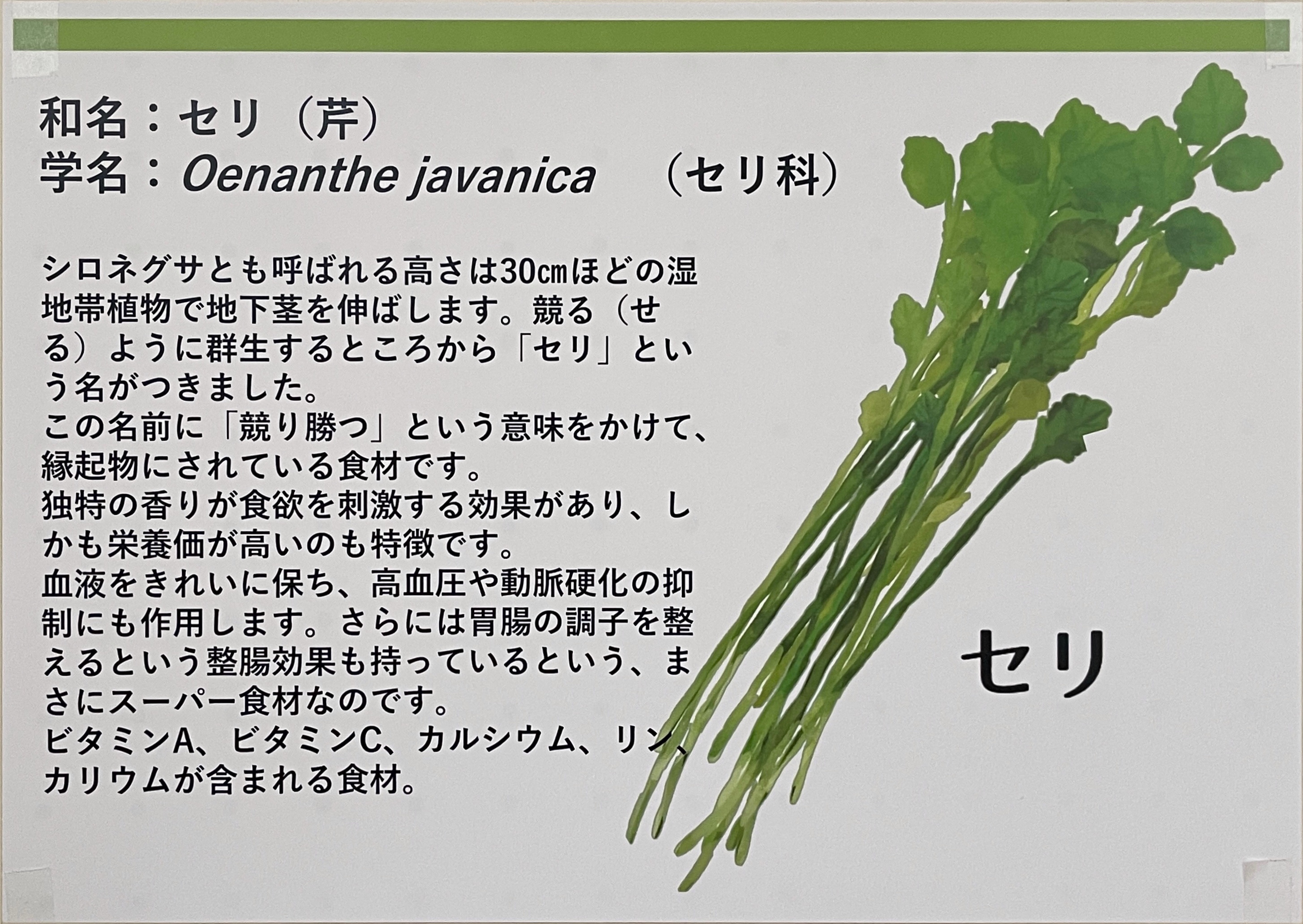
This wildflower is native to Japan and has the meaning of "winning the race", which is good luck.
This is highly nutritious and has bowel control properties.
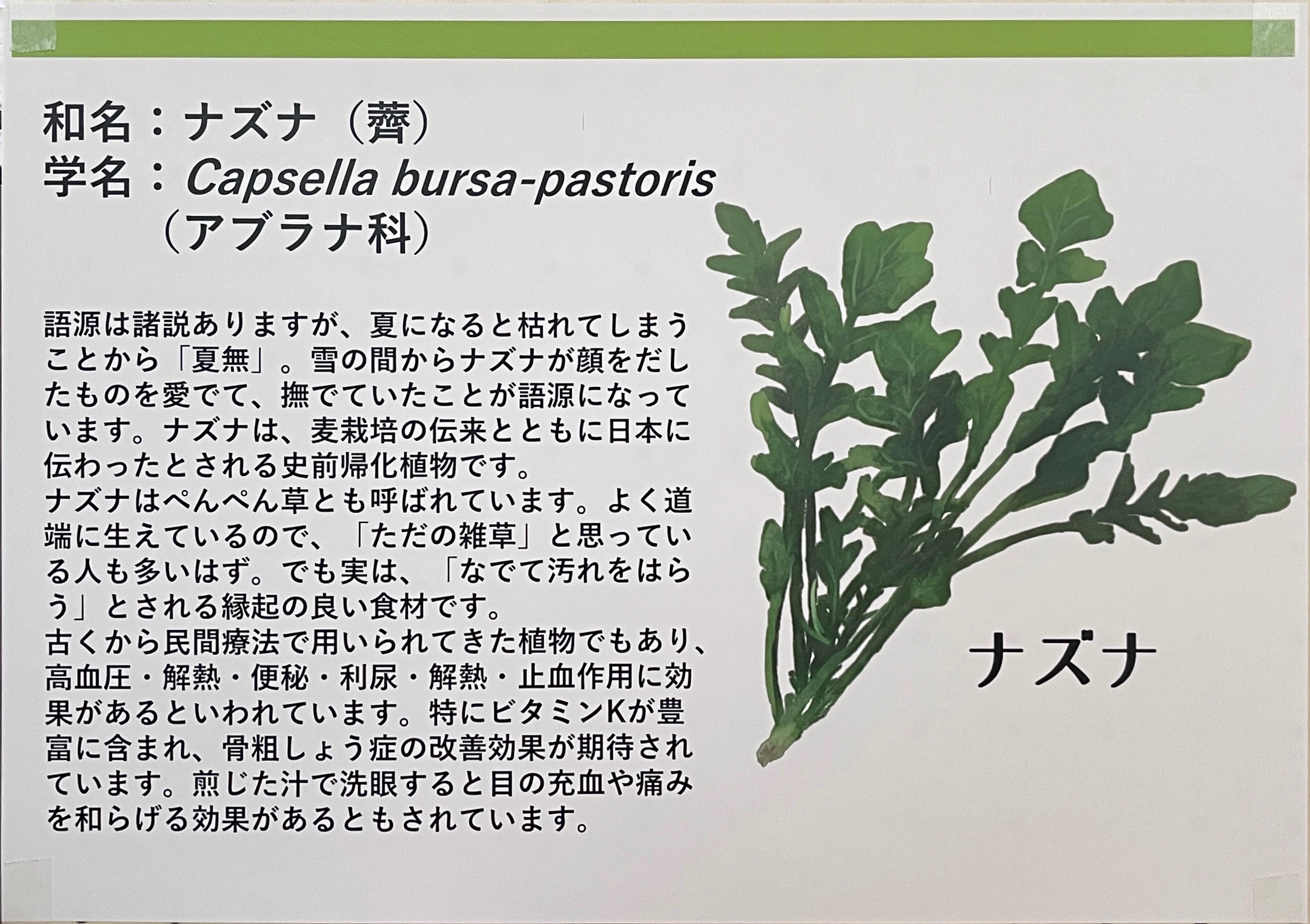
This wild herb is auspicious because it means "caress to remove dirt".
Eating it has a detoxifying effect and is effective in treating gastrointestinal disorders.
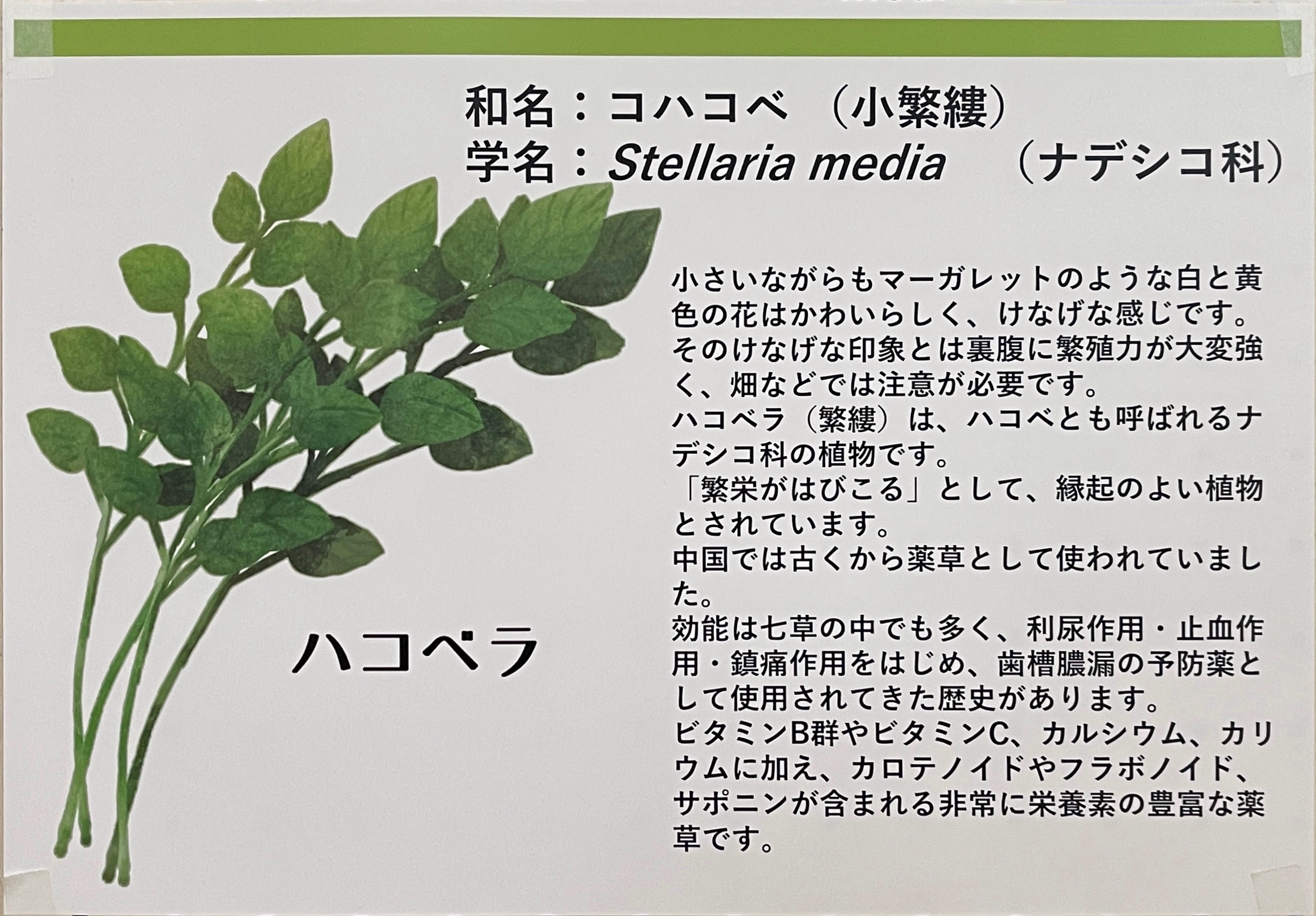
This wild plant means "spreading prosperity", which is good luck.
Eating it has an analgesic effect and is effective as a preventive medicine for dental abscess.

This wild plant means "bell to call the spirits" and is good luck.
This is good to eat when you have gastrointestinal problems such as constipation or gastritis.
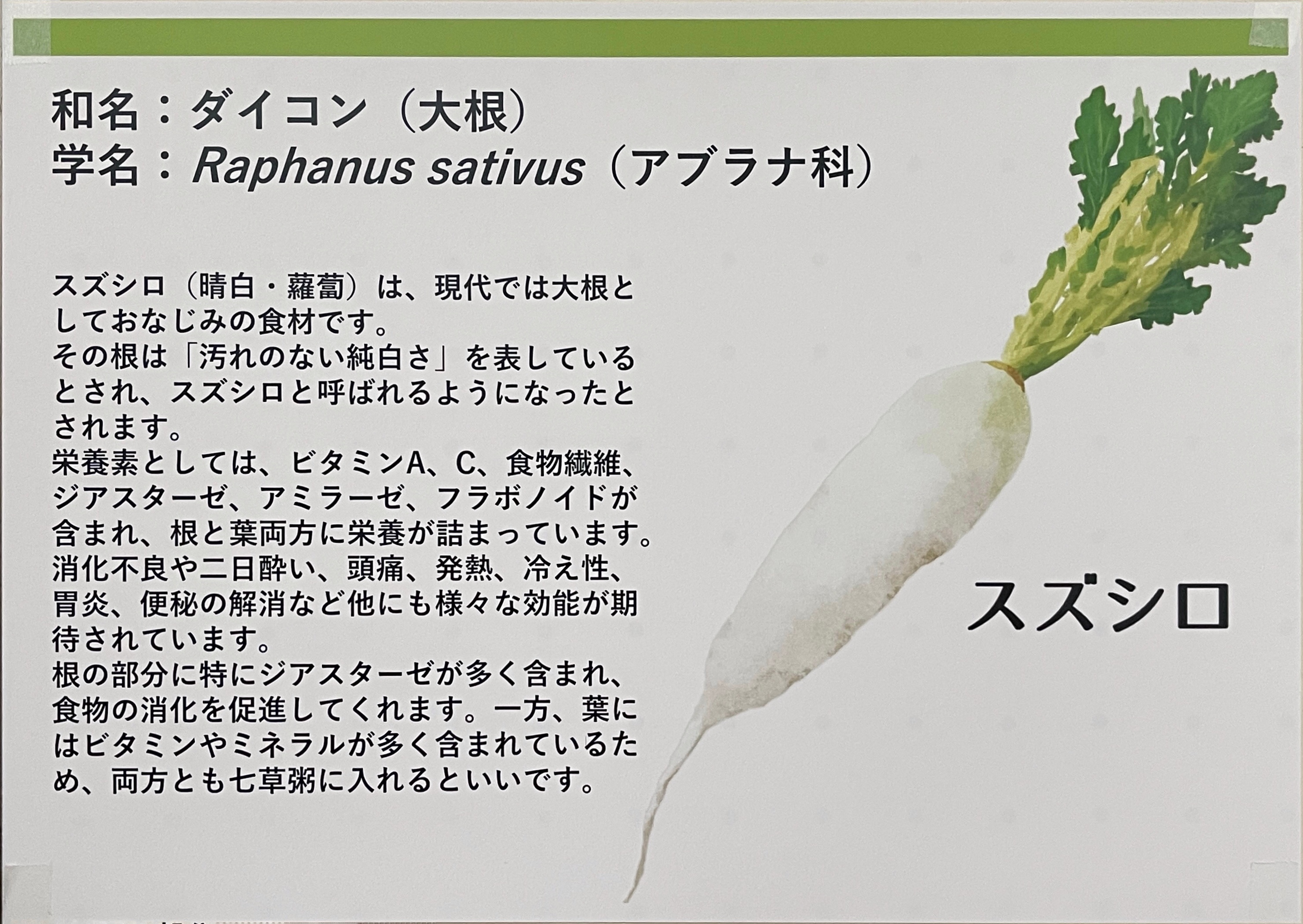
This wild plant is widely cultivated as a vegetable and is auspicious because it means "pure white without stain.
Eating this will help digest food and also help with hangovers.
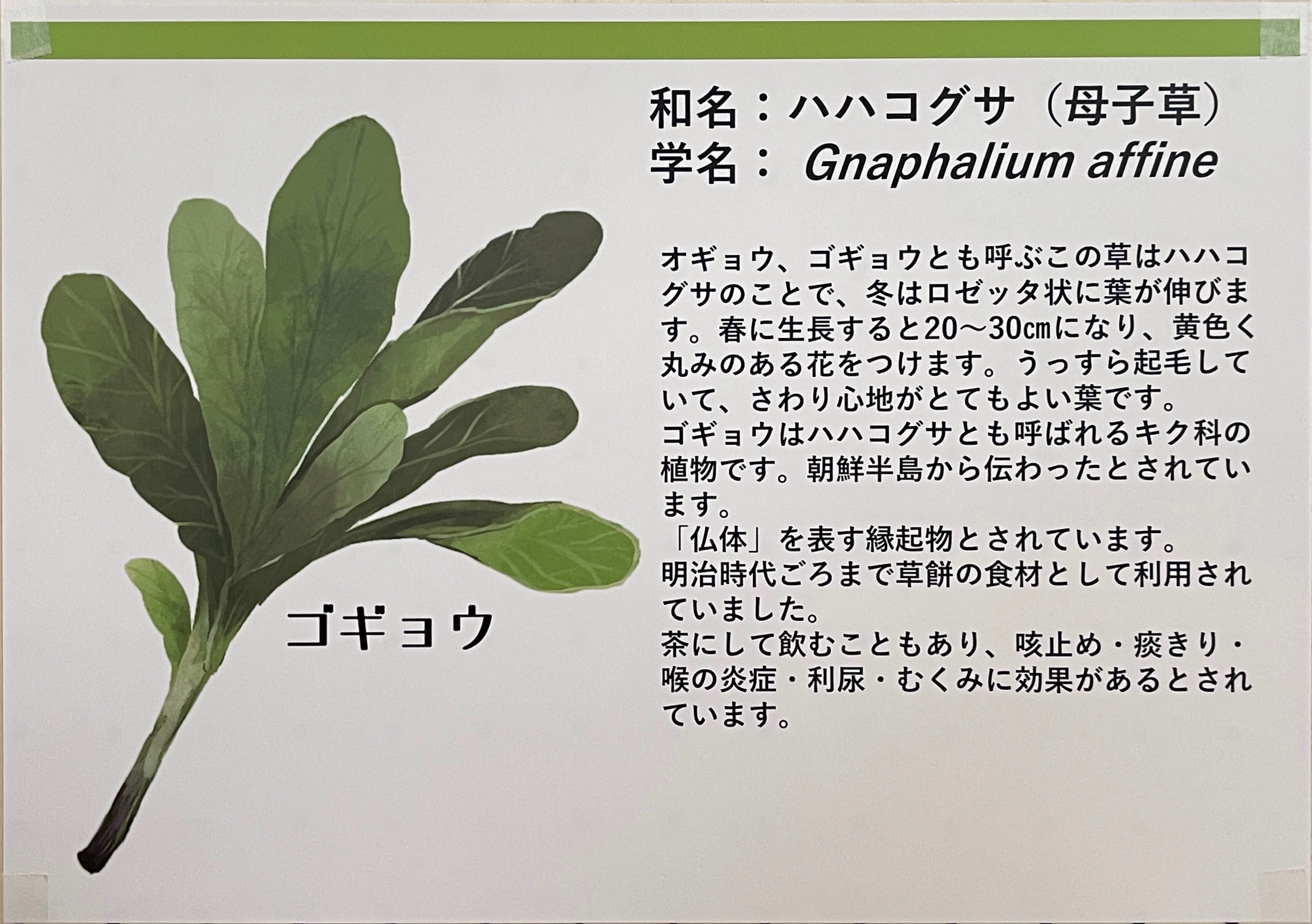
This wild plant means "Buddha's body," which is a good omen.
Eating this helps with coughs and throat irritation.

This wildflower is auspicious because it means "the resting place of Buddha".
Eating this helps regulate the intestines, increase appetite, and prevent high blood pressure.
#
#kimura
#takayuki
#木村
#隆之
#Japan
#Japanese
#Travel
#Sightseeing
#tourism
#garden
#Museums
#scenery
#Landscape
#shrine
#temple
#church
#castle
#view
#historical facilities
#shrinesandtemples
#日本
#観光
#旅行
#日本庭園
#博物館
#神社
#寺
#景観
#城
#教会
#jinjitsu
#人日
#nanakusa
#七草
#GnaphaliumAffine
#CapsellaBursa-pastoris
#BrassicaRapa
#OenantheJavanica
#RaphanusSativus
#LapsanaApogonoides
#StellariaMedia
#ゴギョウ
#ナズナ
#スズナ
#セリ
#スズシロ
#ホトケノザ
#ハコベラ
#カブ
#蕪
#薺
#ハハコグサ
#母子草
#ダイコン
#大根
#芹
#コハコベ
#小繁縷
#コオニタビラコ
#小鬼田平子
#
#
#
#
#
#